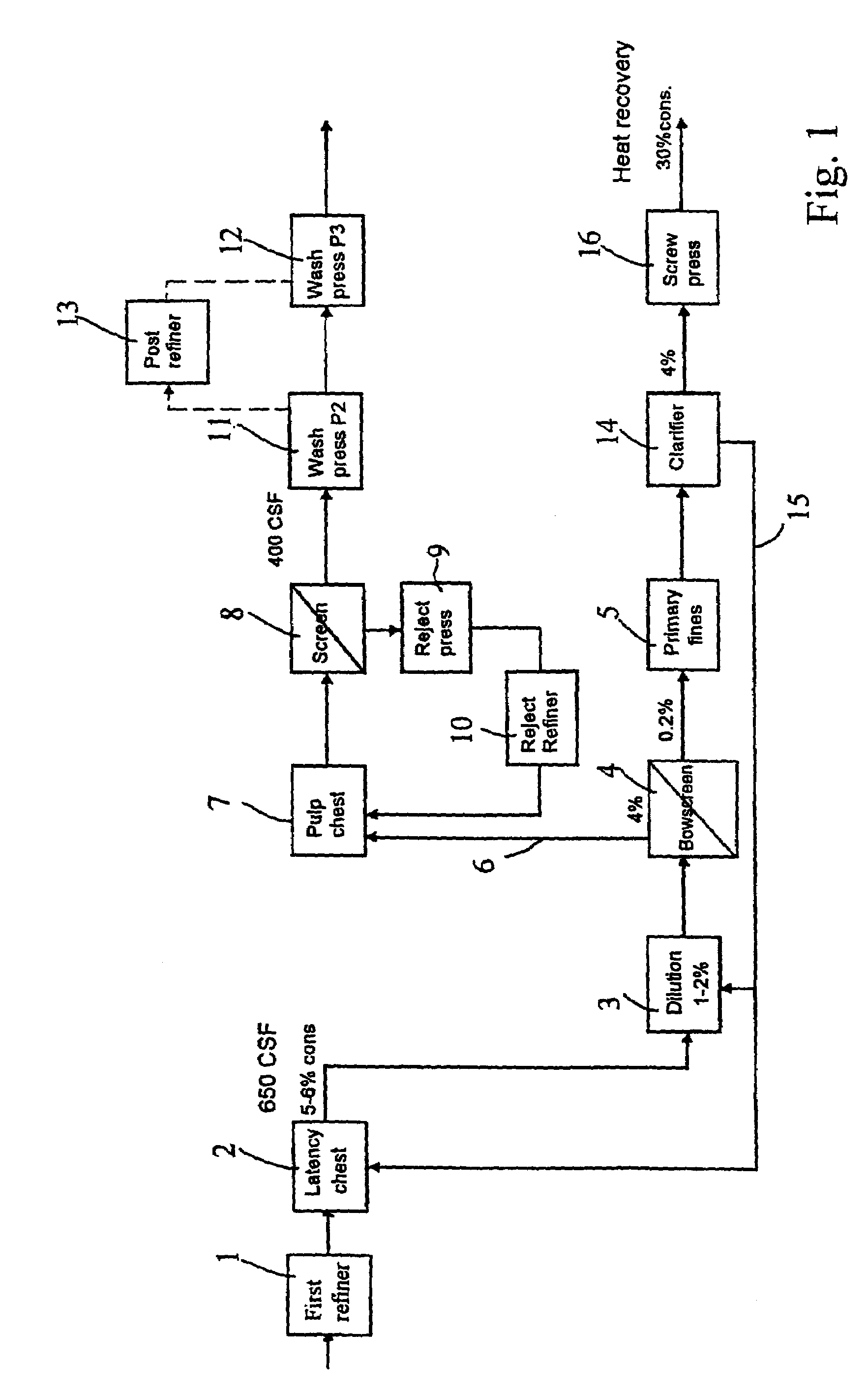Method in connection with the production of mechanical pulp
a mechanical pulp and production method technology, applied in the multi-stage pulping process, pulp liquor regeneration, papermaking, etc., can solve the problems of increased complexing agent consumption, taint and odour, and increased consumption of bleaching agents, so as to reduce the consumption of peroxide and reduce the cost of primary fines. , the effect of substantial chemical savings
- Summary
- Abstract
- Description
- Claims
- Application Information
AI Technical Summary
Benefits of technology
Problems solved by technology
Method used
Image
Examples
example
Fractionation of CTMP Pulp
[0037]Fractionation trials were carried out on CTMP pulp, which had been refined in a first refining step, using a set-up of curved screen with screen slit width 100 μm, at varied pulp consistency, inlet clearance, flow rate and hydraulic pressure (see FIG. 2). The removal of fines varied from 4.8% to 8.5%, as shown in Table 1. Pulp BSK 4, being the reject from the curved screen, with the highest fines removal was chosen for further studies.
[0038]
TABLE 1Curved screen fractionationBowscreen settingProcess parametersFinesSlit widthClearanceFlowPressureConsistencyremovalummml / minkPa%%BSK 1100313501002.04.8BSK 2100318902002.05.9BSK 310029001001.17.8BSK 4100212602001.18.5
[0039]
TABLE 2Bauer McNett fractionation of CTMP pulpBauer McNett FractionationWhole Pulp>16 mesh>30>100>200MnFreeness%%%%%ppmCSFPrimary49.218.5133.912.025590BSK 453.619.8144.18.213650Reference47.919.9144.313.518390Ultra-CTMP47.620154.113.311390
[0040]When comparing the incoming pulp (Primary), wi...
PUM
| Property | Measurement | Unit |
|---|---|---|
| Fraction | aaaaa | aaaaa |
| Fraction | aaaaa | aaaaa |
| Volume | aaaaa | aaaaa |
Abstract
Description
Claims
Application Information
 Login to View More
Login to View More - R&D
- Intellectual Property
- Life Sciences
- Materials
- Tech Scout
- Unparalleled Data Quality
- Higher Quality Content
- 60% Fewer Hallucinations
Browse by: Latest US Patents, China's latest patents, Technical Efficacy Thesaurus, Application Domain, Technology Topic, Popular Technical Reports.
© 2025 PatSnap. All rights reserved.Legal|Privacy policy|Modern Slavery Act Transparency Statement|Sitemap|About US| Contact US: help@patsnap.com



